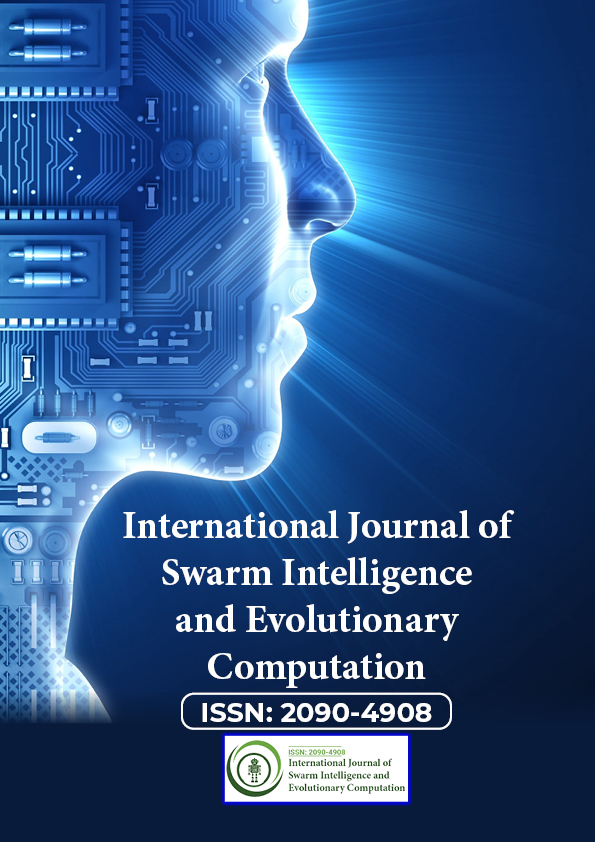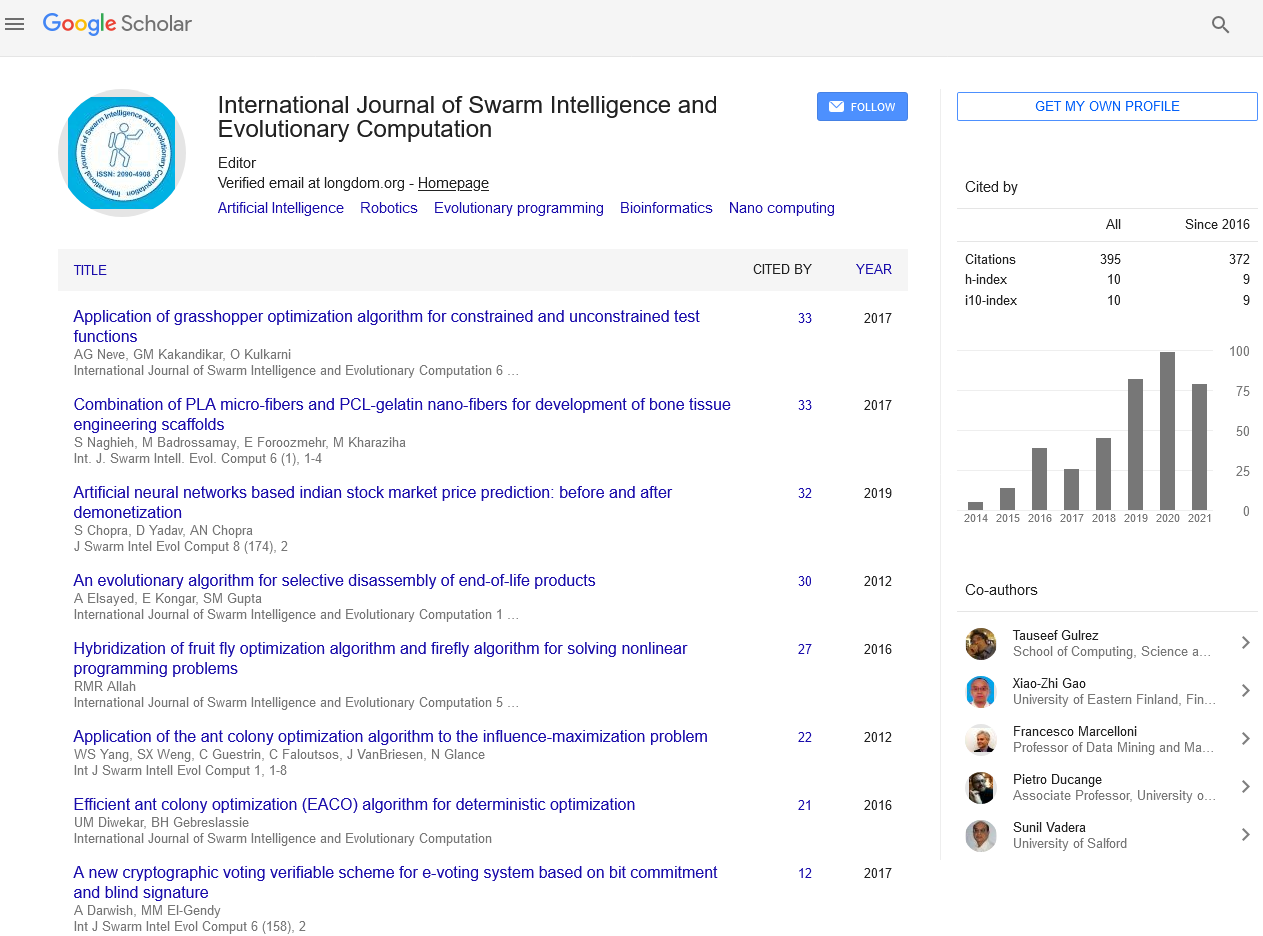Indexed In
- Genamics JournalSeek
- RefSeek
- Hamdard University
- EBSCO A-Z
- OCLC- WorldCat
- Publons
- Euro Pub
- Google Scholar
Useful Links
Share This Page
Journal Flyer

Open Access Journals
- Agri and Aquaculture
- Biochemistry
- Bioinformatics & Systems Biology
- Business & Management
- Chemistry
- Clinical Sciences
- Engineering
- Food & Nutrition
- General Science
- Genetics & Molecular Biology
- Immunology & Microbiology
- Medical Sciences
- Neuroscience & Psychology
- Nursing & Health Care
- Pharmaceutical Sciences
Perspective - (2024) Volume 13, Issue 3
Interactive Computational Models: Empowering Users in Data Exploration and Decision-Making
Nathan Santorin*Received: 26-Apr-2024, Manuscript No. SIEC-24-25858; Editor assigned: 29-Apr-2024, Pre QC No. SIEC-24-25858 (PQ); Reviewed: 14-May-2024, QC No. SIEC-24-25858; Revised: 21-May-2024, Manuscript No. SIEC-24-25858 (R); Published: 29-May-2024, DOI: 10.35248/2090-4908.24.13.374
Description
Interactive computational models represent a fusion of computational thinking and human-computer interaction, enabling users to interact with and manipulate computational systems in real-time. These models empower users to explore, simulate, and understand complex phenomena through intuitive interfaces and interactive visualizations.
Principles of interactive computational models
The fundamental ideas of interactive computational models combine human-centered design with computational thinking:
Interactivity: Interactive computational models engage users through intuitive interfaces, enabling them to interact with and manipulate model parameters, inputs, and outputs in real-time.
Visualization: Visual representations play an important role in interactive models, providing users with insights into complex data, relationships, and processes. Effective visualization enhances understanding and promotes exploration.
Feedback and adaptation: Interactive models provide feedback to users based on their interactions, allowing for iterative exploration and learning. They adapt to user input, preferences, and goals, encouraging a personalized and engaging experience.
Collaboration: Interactive computational models facilitate collaboration and knowledge sharing among users, enabling collective exploration and problem-solving in diverse domains.
Design considerations for interactive computational models
Designing effective interactive computational models requires careful consideration of several factors:
User-centered design: Designing models with the user in mind, considering their goals, preferences, and expertise levels. User testing and feedback play an important role in iterative design and refinement.
Intuitiveness: Interfaces should be intuitive and easy to use, minimizing the learning curve for users and promoting engagement. Clear visual cues and interactive elements enhance usability.
Scalability and performance: Models should be scalable and performant, capable of handling large datasets, complex simulations, and real-time interactions without sacrificing responsiveness.
Flexibility and customization: Providing users with flexibility to customize and adapt the model to their specific needs, preferences, and research questions. Customizable parameters and visualization options enhance usability and relevance.
Applications of interactive computational model
Interactive computational models find applications across diverse domains, including:
Education and training: Interactive models are used for teaching computational concepts, scientific principles, and complex systems in fields such as physics, biology, and economics. They provide hands-on learning experiences and promote active engagement.
Scientific exploration: Researchers use interactive models for exploring complex phenomena, conducting simulations, and analyzing data in domains such as climate science, epidemiology, and computational chemistry. Interactive visualization facilitates data exploration and hypothesis testing.
Policy making and decision support: Decision makers use interactive models for scenario analysis, policy evaluation, and risk assessment in areas such as public health, transportation planning, and urban development. Interactive models enable stakeholders to explore alternative strategies and their implications.
Art and design: Interactive computational models inspire creativity and expression in art and design, enabling artists and designers to create interactive installations, generative artworks, and immersive experiences. Interactive models blur the boundaries between art, technology, and human expression.
Challenges and future directions
Despite their potential, interactive computational models face several challenges and opportunities for future research:
Usability and accessibility: Improving the usability and accessibility of interactive models for diverse user groups, including individuals with disabilities and non-technical backgrounds.
Integration with AI and machine learning: Integrating interactive models with AI and machine learning techniques to enhance user experiences, personalize interactions, and enable adaptive behavior.
Ethical considerations: Addressing ethical considerations related to data privacy, algorithmic bias, and the responsible use of interactive models in decision-making and policy development.
Interdisciplinary collaboration: Fostering interdisciplinary collaboration between computer scientists, designers, domain experts, and end users to co-design and co-develop interactive computational models that meet real-world needs and challenges.
Conclusion
Interactive computational models represent a powerful approach to bridging human-computer interaction and computational thinking, enabling users to explore, simulate, and understand complex phenomena through intuitive interfaces and interactive visualizations. With their potential to transform education, research, decision-making, and creative expression, interactive models hold promise for addressing some of society's most pressing challenges and advancing interdisciplinary collaboration. Through ongoing innovation, collaboration, and user-centered design, interactive computational models will continue to shape the future of human-computer interaction and computational exploration.
Citation: Santorin N (2024) Interactive Computational Models: Empowering Users in Data Exploration and Decision-Making. Int J Swarm Evol Comput. 13:374.
Copyright: © 2024 Santorin N. This is an open-access article distributed under the terms of the Creative Commons Attribution License, which permits unrestricted use, distribution, and reproduction in any medium, provided the original author and source are credited.


